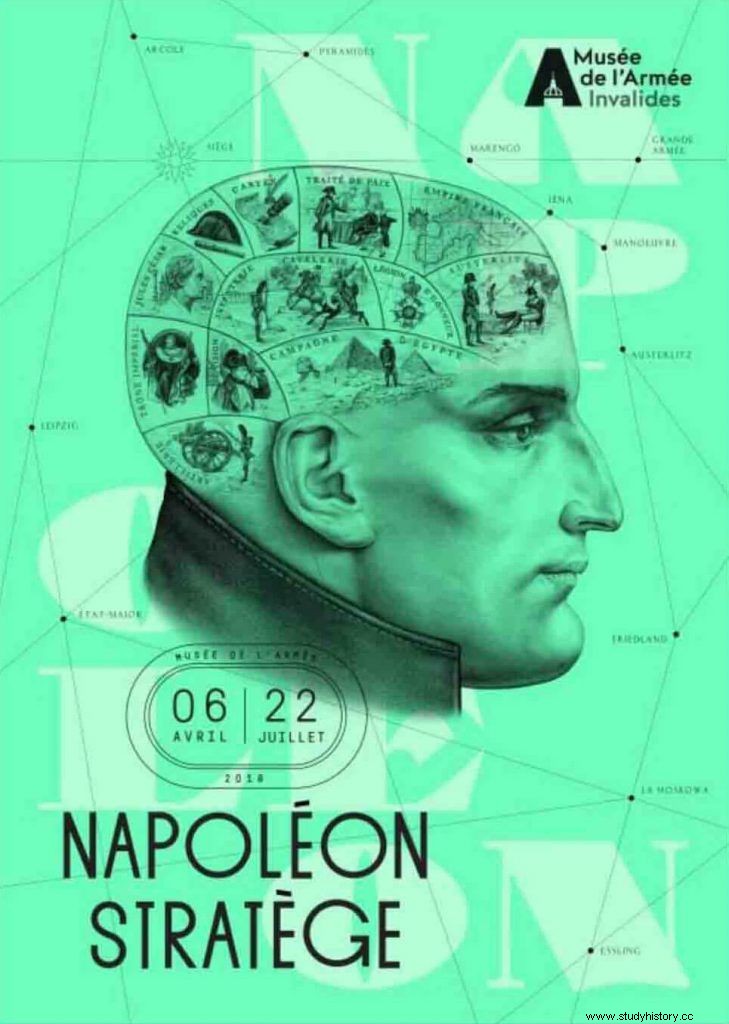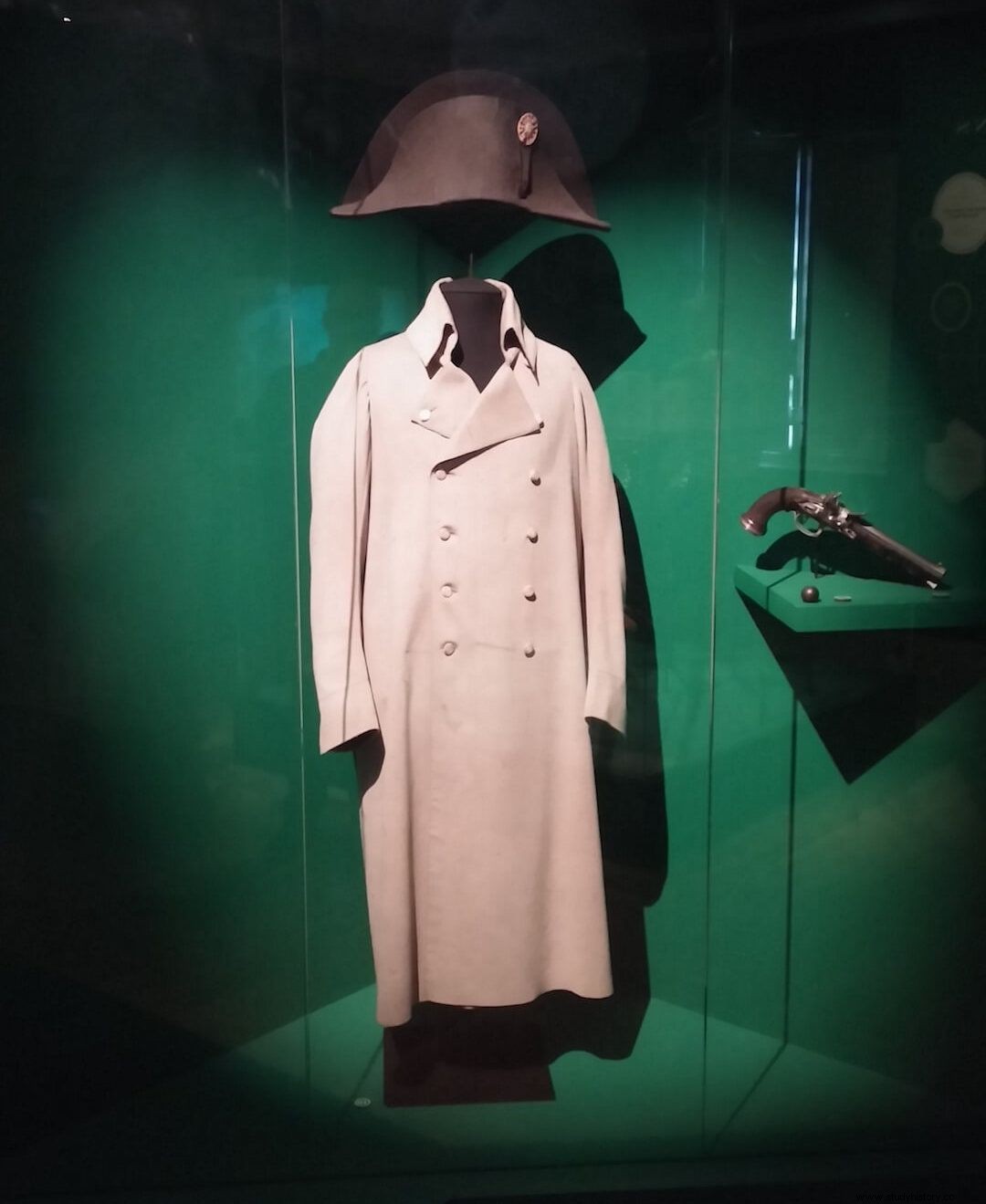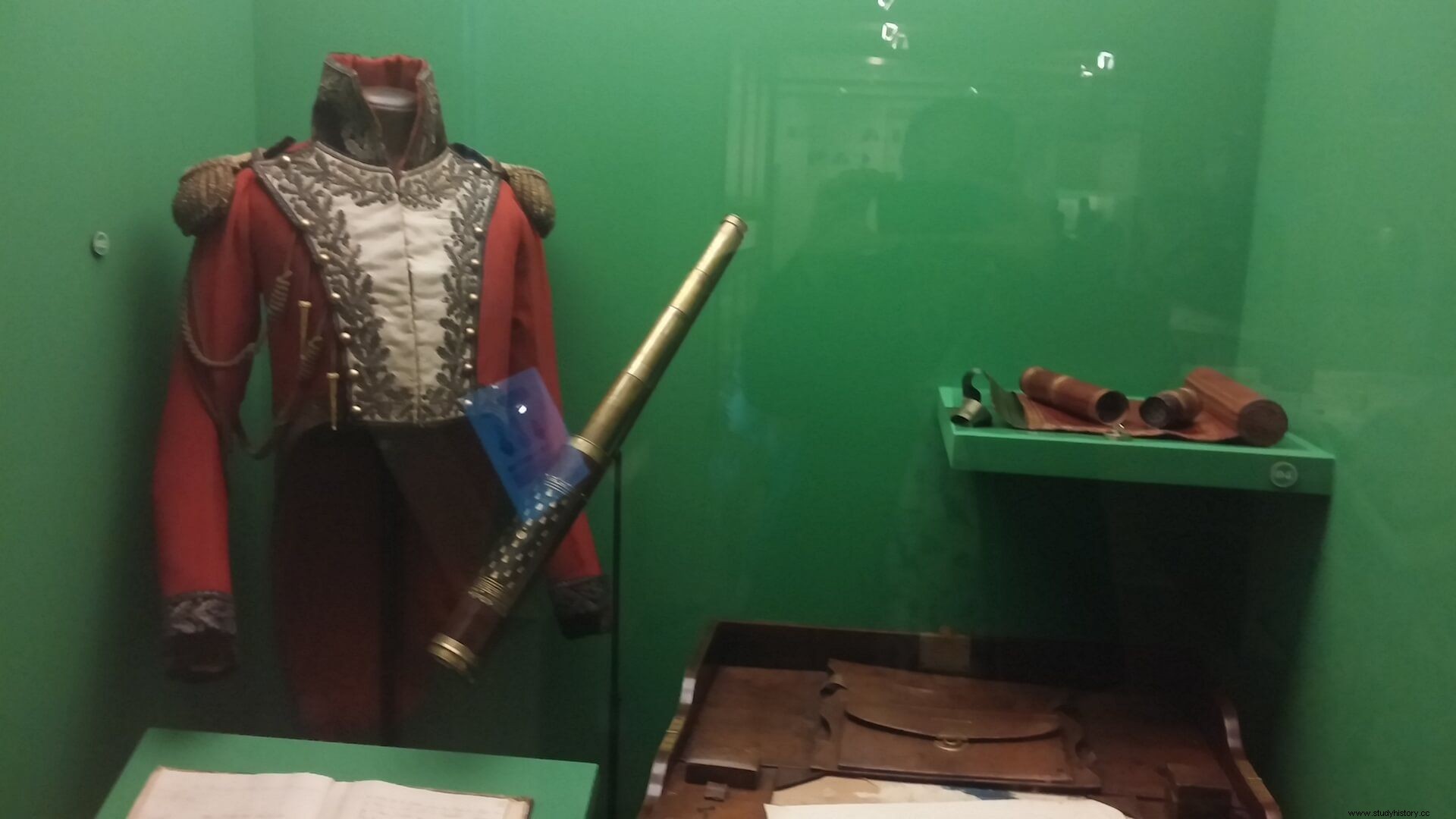As a continuation of the previous exhibitions, “Napoléon et l’Europe ” (2013) and “Napoléon à Sainte-Hélène. The conquest of memory ” (2016), at the Musée de l’Armée in Paris, between April 6 and July 22, 2018, the exhibition “Napoléon Stratège” («Napoleon Strategist «), in which a study of the way of understanding the development of the war by the emperor has been presented.

Divided into two large areas to adapt to the construction structure of the Hôtel national des Invalides , the exhibition shows, based on a wide and excellent selection of materials from the collections of the Parisian museum itself and others such as the Musée de l'Empéri de Salon-de Provence, and private collections, highlighting among the latter the marshal's baton, with its case, by André Massena, and which is exhibited together with those of Davout and Bessières, the origins of Bonaparte's military thought from his first readings of classical Greek and Latin texts, the application of these principles sifted by his own way of understanding war in the campaigns of Italy and Egypt, until the definition of the army model based on the organization of Army Corps prepared to fight autonomously and the irruption of the theory of the central position to achieve division enemy forces and have specific numerical superiorities in specific situations. Logistics, military intelligence, election of commanders, study of the adversary are sections dealt with in it, as well as the evolution of the military strategy followed by their opponents, to whom the exhibition devotes special attention, giving the campaigns of Russia and Spain the essential part of the causes of the defeat of the First Empire.
One of the most significant aspects of the "Napoleon Strategist" museographic proposal consists of the profusion of dissemination materials conceived exclusively for the exhibition, beginning with the advertisement film in which Berthier, Josefina, Francisco I and a grenadier from the Vieille Garde explain their vision of the emperor's different strategies with an invaluable humorous touch, and that includes three audiovisuals and 14 interactive elements. The former include various scenes from the film Waterloo (1969) by Sergueï Bondartchouk, and two recreations of Napoleon's reactions on the nights following the victory at Austerlitz (1805) and the defeat at Waterloo (1815) in which the emperor reflects on the causes of success and failure of their strategies. If the filmed material constitutes an interesting element, the interactive ones are an excellent sample of the possibilities of this type of resources to explain key elements such as the use of the cartography of the time in the definition of the campaigns, or the evolution of tactics from the company level to the division level, introducing the visitor to the various types of approach, attack and defense maneuvers. A second block of interactives allows you to put on the boots of both Napoleon and his main opponents to make the appropriate decisions both in the development of campaigns and battles and in the election of the commanders of the different units, logistics or obtaining information. .

The use of audiovisual resources to contextualize the exhibition "Napoleon Strategist" of a theme that had been considered restricted to a sector of the interested public, has become a determining element in the renewal of the exhibition discourse of the permanent collections of the Musée de l' Armée, especially after the renovation of the rooms dedicated to the period between the reigns of Louis XIV and Napoleon III, which is being extended to those corresponding to both World Wars, thus making it possible to convert excellent collections of objects into teaching resources integrated into the proposals contemporary teaching. To this is added, in the present case, the edition of an excellent catalog directed by Bruno Colson, undoubtedly one of the main current specialists in the Napoleonic world, hand programs that include explanatory lists of battles and a glossary to allow understanding of the main technical concepts, and even game cards for schoolchildren on the theme of the exhibition.

The exhibition is also a new example of the excellent programming that this center is carrying out and that we were already able to verify in 2017 in two previous exhibitions:"Guerres secrètes" dedicated to espionage during the two World Wars with interesting derivatives in the field of literary creation and cinematographic, and “France-Allemanne(s) 1870-1871. The war, the commune, the memories ”, a spectacular exhibition on the Franco-Prussian War , the fall of the Second Empire, the proclamation of the Third Republic, and especially the development of the Paris Commune and its crushing by government troops. In the year in which the centenary of the armistice of November 11, 1918, which put an end to the military operations of the First World War, will be celebrated, the museum has programmed two new exhibitions:“1918, armistice(s) ” between July 24 and September 30, and “À l’est la guerre sans fin 1918-1923 ” between October 5 and January 20, 2019 in which the emergence of the new states in Eastern Europe will be analyzed as a result of the decomposition of the Austro-Hungarian Empire endorsed in the Treaty of Versailles of 1919, the Civil War Russian and Western interventions in the theater of operations. Without a doubt, excellent excuses to travel to Paris.
By Francisco Gracia Alonso is a professor of Protohistory at the UB, author of Severed Heads and Outraged Corpses and a member of the advisory board of Desperta Ferro Antigua y Medieval, Desperta Ferro Modern History and Archeology and History.
